Academic year begins with convocation, presidential address
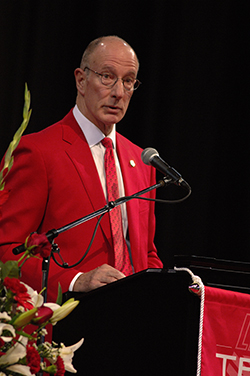 Lamar University opened the new academic year with a reception and convocation for faculty and staff on Wednesday, August 17. Returning students begin moving in Thursday and classes start Monday, August 22.
Lamar University opened the new academic year with a reception and convocation for faculty and staff on Wednesday, August 17. Returning students begin moving in Thursday and classes start Monday, August 22.
LU’s award-winning drumline, cheerleaders, brass quintet and mascots Big Red and Lu added to the festive air in the arena replete with red and black.
President Kenneth Evans spoke to faculty and staff at the start of the 2016-2017 academic year in his fourth “state of the university” address in the university’s Montagne Center Arena from a platform fitted out for Saturday’s summer commencement exercises that will see around 480 graduates walk across the stage to receive diplomas.
Earlier, faculty and staff gathered in the adjacent Cardinal Club Room for an opening reception.
After fanfare by the Lamar University Quintet and introductions, Evans shared updates on an array of campus projects, accomplishments and plans.
Evans welcomed 202 new full time and part time staff members and 97 new faculty members.
Evans began by thanking returning staff and faculty for helping make the preceding year successful and looked forward to “what promises to be an even better year in 2016-2017.”
In his address, he presented a snapshot of several aspects of the university including the expectation of adding a significant number of new students over the past year, continuing a trend of record-setting enrollments. Driving this growth, Evans said, is the continued attention of university recruiting efforts in LU’s major market areas with increased attention to prospective in-residence students.
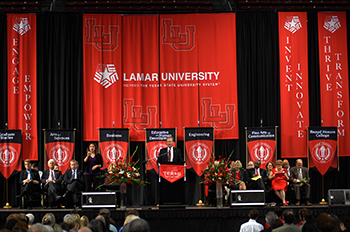 “In short, an extensive and totally revamped effort to recruit students particularly in the Houston, Central Texas and the Dallas-Fort Worth areas have yielded what we anticipate to be an almost 200 net new student increase in first time freshmen and about 100 net new transfer students.”
“In short, an extensive and totally revamped effort to recruit students particularly in the Houston, Central Texas and the Dallas-Fort Worth areas have yielded what we anticipate to be an almost 200 net new student increase in first time freshmen and about 100 net new transfer students.”
“Undergraduates who live on or near campus are statistically more likely to graduate within six years,” Evans said. “In addition to positive retention, in residence students contribute to campus life, volunteer for projects and committees, populate student government and much more.”
In Fall 2013, LU had about 2,000 students living its Cardinal Village residence halls. The following fall the number had risen to about 2,150. The expectation is for around 2,300 students living in Cardinal Village that has a potential capacity of around 2,500.
The emphasis on residential students does not lessen LU’s commitment to commuting students and to its very significant and growing presence in online delivery, Evans added.
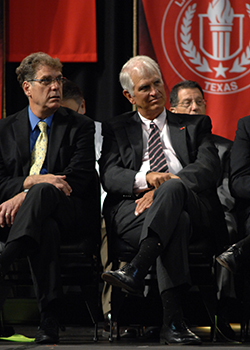 Serving students is a major continuing focus that will include “an integrated retention strategy incorporating learning communities, early career advising and counseling, intrusive academic advising, accelerated college enrollment, financial advising, summer academies, bridge programs and much more.”
Serving students is a major continuing focus that will include “an integrated retention strategy incorporating learning communities, early career advising and counseling, intrusive academic advising, accelerated college enrollment, financial advising, summer academies, bridge programs and much more.”
Evans shared about many student successes including Beck Fellows Cade Johnson and Nic Nikoloutsos whose summer experiences included, respectively, research at Children’s Hospital of Philadelphia on signal transduction inhibitors in pre-leukemia cells, and the study of nanopartical use for drug delivery at the Institute of Biomedical Sciences of Academia Sinica in Taipei, Taiwan.
Since the past academic year concluded, LU Summer Undergraduate Research fellows worked on seven projects selected among 40 applicants. The projects included hearing science, robotics and high-speed switches in electrical engineering, mathematical modeling and much more.
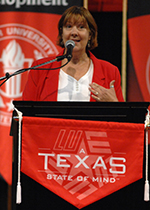 Another area of emphasis at LU has been to increase opportunities and participating in study abroad. Over the past three years, the university’s study abroad experiences have grown from 40 students placed in study abroad programs in 2013, to more than 180 students last year, learning in locations like the United Kingdom, Italy, St. Lucia, Japan, Iceland, Costa Rica, Mexico, South Korea and Spain.
Another area of emphasis at LU has been to increase opportunities and participating in study abroad. Over the past three years, the university’s study abroad experiences have grown from 40 students placed in study abroad programs in 2013, to more than 180 students last year, learning in locations like the United Kingdom, Italy, St. Lucia, Japan, Iceland, Costa Rica, Mexico, South Korea and Spain.
Construction and renovation continue to be a major factor on campus, Evans said, with planned new building and renovation totaling about 300,000 sq. ft. over the next three to four years.
Included are: the Wayne A. Reaud Building and Reaud Honors College, where departments will be moving in the next few weeks, to the Center for Innovation, Commercialization and Entrepreneurship that will be completed in the coming months, to the Setzer Student Center and Quadrangle remodel slated to start in October, and the Science and Technology building that will begin construction next year.
Other projects include remodeling the Mary and John Gray Library, a renovation of the University Theatre, a new music annex, Renovations to the Hayes Biology Building and Plummer Hall, as well as a new residence hall slated for either full or partial completion in the fall of 2019, as well as the renovations of each residence hall that began this summer.
Building on academic experiences across disciplines is another focus at the university. Five proposals were selected as Visionary Initiatives from 49 submitted and are being funded with a three-year commitment by the university, Evans said.
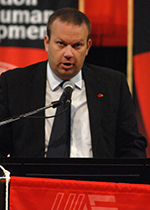 Selected were: The Center for Advances in Digital Education – an effort to leverage LU’s strength in online education to enhance the ability of k-12 and post-secondary educators’ capability to implement, administer and evaluate digital learning systems; The Center for Digital Technologies in Health and Disability – using Digital technologies to have significant positive effects in health related information dissemination and recovery processes particularly in simulation applications; and The Center for Flare and Abnormal Situation Management Research for Petroleum and Chemical Process Industries – builds on LU’s long-standing role in leading the science and practice of refinery flare minimization and the management of abnormal events, including cyber threats.
Selected were: The Center for Advances in Digital Education – an effort to leverage LU’s strength in online education to enhance the ability of k-12 and post-secondary educators’ capability to implement, administer and evaluate digital learning systems; The Center for Digital Technologies in Health and Disability – using Digital technologies to have significant positive effects in health related information dissemination and recovery processes particularly in simulation applications; and The Center for Flare and Abnormal Situation Management Research for Petroleum and Chemical Process Industries – builds on LU’s long-standing role in leading the science and practice of refinery flare minimization and the management of abnormal events, including cyber threats.
Also funded are: The Mirabeau B. Lamar Center for the Study of Southeast Texas and the Upper Gulf Coast (The Lamar Center) – Making the case for the distinctive characteristics of the Big Thicket, oil and lumber industries, cultural blending of Cajun and Texan and much more of what defines this area of Texas as distinctive and deserving of dedicated efforts to record, interpret, promote and protect what is identifiably Southeast Texas; The Interdisciplinary Freshman Experience –a seed grant program targeted at cross disciplinary ideation experiences with dedicated focus on areas of social need.
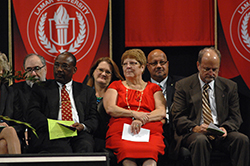 “The most striking attribute of LU is its faculty and staff,” Evans said. “Because of the socio-economic market we serve and our efforts to provide an affordable education, Lamar University is not a way station on a predestined course for our students but rather a transformative juncture in our students’ and their future family’s lives.” Much of the credit for these successes is due to the “highly dedicated faculty and staff” that compose the university, Evans said.
“The most striking attribute of LU is its faculty and staff,” Evans said. “Because of the socio-economic market we serve and our efforts to provide an affordable education, Lamar University is not a way station on a predestined course for our students but rather a transformative juncture in our students’ and their future family’s lives.” Much of the credit for these successes is due to the “highly dedicated faculty and staff” that compose the university, Evans said.
The event concluded with a flourish provided by Lamar University cheerleaders to the LU Alma Mater and Fight Song before faculty and staff returned to their work of preparation for the new semester.
On stage were Provost Jim Marquart, Cruse Melvin, vice president for finance and operations, Vicki McNeil, vice president for student engagement, Priscilla Parsons, vice president for information technology, Juan Zabala, vice president for university advancement, John Bello-Ogunu, vice president for diversity and inclusion, Kevin Smith, senior associate provost, Brenda Nichols, associate provost, Jason Henderson, director of athletics, William Harn, dean of graduate studies, Joe Nordgren, interim dean of arts and sciences, Henry Venta, dean of business, Robert Spina, dean of education and human development, Srinivas Palanki, dean of engineering, Derina Holtzhausen, dean of fine arts and communication, and Kevin Dodson, dean of the Reaud Honors College.


